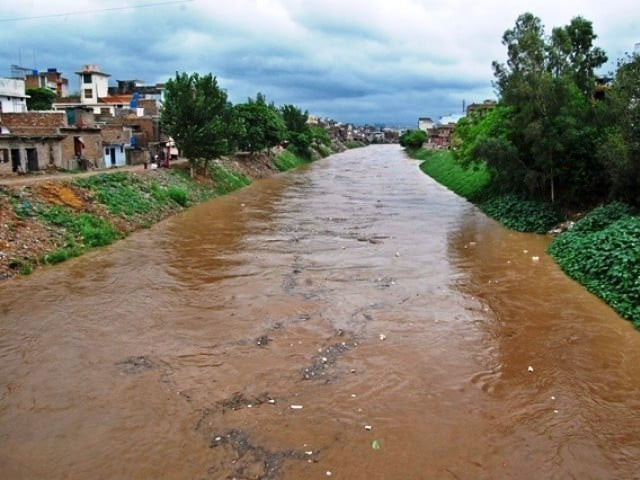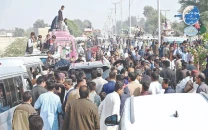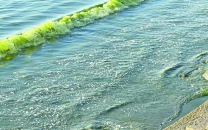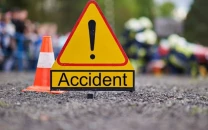Stubborn citizens: Leh dredging efforts undercut by continuing dumping
Residents defend selves, say area lacks garbage bins.

PHOTO: FILE
Though, Wasa has installed banners and billboards on both sides of the Leh, requesting people to stop throwing waste in the stream, residents seldom pay heed, usually complaining about the lack of garbage bins in the area.
Ironically, the locals themselves are the worst-affected by the dumping, as it leads to flooding and increase the populations of mosquitoes, flies, and other insects in the surrounding area.
Wasa has launched the third phase of dredging of the Leh, which will cost Rs30 million. Officials at the agency said it was the responsibility of the Rawalpindi Waste Management Corporation (RWMC) to place waste bins along the Leh and join hands with Wasa in the awareness campaign against dumping.
“The government should place a waste bin outside every five to 10 houses. Then we won’t dump waste in the Leh,” was the untenable solution offered by Moeed Raja, a resident of Gawalmandi.
Besides, various contractors also dump construction materials in the Leh.
“We clean it every year and remove thousands of tons of waste from it by spending huge amounts of money,” said Wasa spokesperson Muhammad Umar Farooq.
The provincial government approved a Rs92 million three-phase dredging and desilting project in 2011-2012. The first two phases in 2011-2012 and 2013-2014 cost Rs62 million.
Officials at Wasa were of the view that building the Leh Expressway was the way to keep the stream clean and reduce the risk of floods.
Published in The Express Tribune, February 28th, 2015.



















COMMENTS
Comments are moderated and generally will be posted if they are on-topic and not abusive.
For more information, please see our Comments FAQ